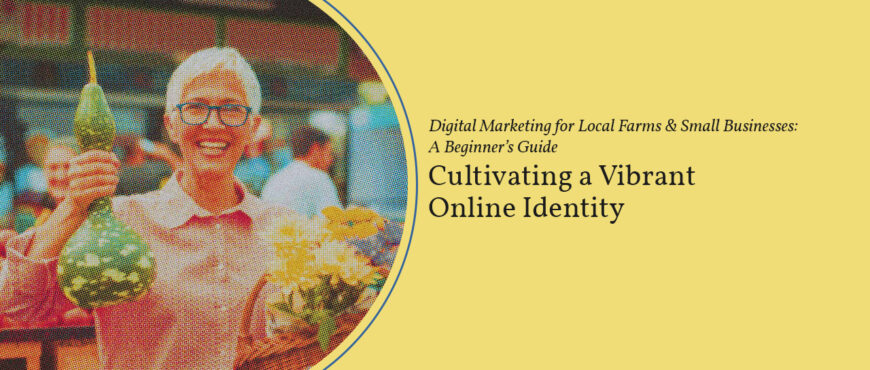Welcome to the inaugural post of our series, “Digital Marketing for Local Farms & Small Businesses: A Beginner’s Guide.” In today’s interconnected world, digital marketing isn’t just a buzzword; it’s a lifeline for local farms and farmers markets striving to thrive in a competitive landscape. Let’s explore why understanding and embracing digital marketing is crucial for the success of these essential components of our food system.
1. Unpacking Digital Marketing
Digital marketing is a multifaceted approach that utilizes various online platforms and tools to promote products, engage with customers, and drive business growth. Here’s a breakdown of key concepts relevant to local farms:
Social Media Marketing
Why it matters: Platforms like Facebook, Instagram, and Twitter offer direct channels for farms to engage with consumers, share stories, and showcase their products.
Benefits: Increased visibility, community engagement, and brand awareness.
Content Marketing
Why it matters: Producing valuable content such as blogs, videos, and infographics establishes farms as industry experts, educates consumers about sustainable practices, and highlights the farm-to-table journey.
Benefits: Builds credibility, attracts potential customers, and fosters trust.
Search Engine Optimization (SEO)
Why it matters: Optimizing farm websites for search engines ensures they rank higher in relevant search results, making it easier for local consumers to find information about the farm and its offerings.
Benefits: Drives website traffic, enhances visibility, and improves rankings.
2. The Significance of Digital Marketing for Local Farms
Direct-to-Consumer Connection
Digital marketing empowers local farms to establish direct connections with consumers, bypassing intermediaries. Maintaining an online presence allows farms to share their stories, values, and products directly with their target audience.
Expanding Market Reach
Digital platforms extend the reach of local farms beyond physical farmers markets, attracting customers from neighboring communities, urban areas, and even globally. Online farmers markets and home-delivery platforms are prime examples of this expansion.
Educating Consumers
Digital channels offer opportunities to educate consumers about sustainable farming practices, seasonal produce, and the importance of supporting local agriculture. Farms can share informative content through blog articles, social media posts, and virtual farm tours.
Building Brand Loyalty
Consistent digital engagement cultivates brand loyalty among consumers. Establishing a strong online presence and offering personalized content, such as email newsletters and loyalty programs, helps foster lasting connections with customers.
Feedback and Improvement
Digital platforms enable farms to receive direct feedback from consumers, helping them improve products, services, and overall customer experience. Online surveys, reviews, and social media interactions serve as valuable channels for gathering insights.
Conclusion
In today’s dynamic digital landscape, local farms must embrace digital marketing to thrive and remain competitive. By harnessing the power of social media, content creation, SEO, and other digital tools, farms can forge stronger connections with consumers, expand their market reach, and contribute to a resilient and sustainable food system.









